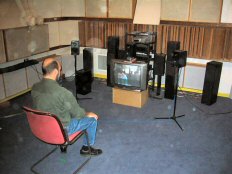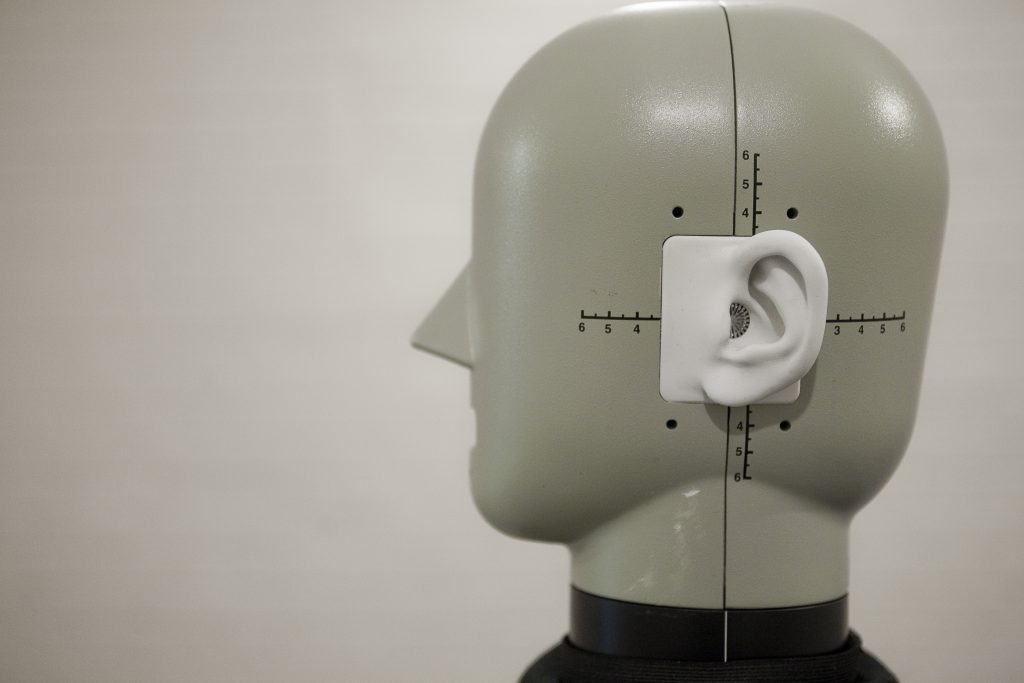Improving TV sound for hearing impaired people
ITC “Clean Audio” project
This research was carried out during the period April to September 2003 at the Acoustics Research Centre in the University of Salford. The Clean Audio Project is funded by the Independent Television Commission (ITC).
The project looks at the effect that different audio reproduction methods have on the enjoyment, perceived sound quality and the dialogue clarity of television audio for hard of hearing viewers. This was then compared with the effect on non-hearing impaired viewers.

The ITC receive many complaints from hard of hearing viewers saying that the background sound or music is too loud and makes it difficult to understand the dialogue. Dolby Digital 5.1 contains a number of discrete audio channels one of which (the centre channel) is a dedicated dialogue channel. This allows us to adjust the level of left and right speakers in relation to the centre speaker so that the music and background sounds have been reduced in relation to the dialogue.
A series of listening tests were carried out using different audio reproduction methods. Subjects were asked to compare these processes based on dialogue clarity, overall sound quality, and their enjoyment of the clip.
An additional test involved subjects to set their own percieved comfortable listening level for each process.
Key to processes assessed
- LCR Centre channel, plus left and right channels at standard relative levels set using reference tones.
- LCR1 Centre channel, plus left and right channel at -3dB.
- LCR2 Centre channel, plus left and right channel at -6dB.
- C Centre channel only.


Summary of Results
- Lowering the level of the front left and front right channels with relation to the dialog channel improved the clarity of the dialog for both hearing impaired and non-hearing impaired subjects.
- For hearing impaired subjects, there was a direct correlation between the clarity of the dialog, the perceived overall sound quality, and their enjoyment of the material.
- For non-hearing impaired subjects the reverse is true; although clarity is enhanced by reducing surround channel levels, this detracts from the perceived sound quality and enjoyment of the material.
Conclusions
From these tests we can say that hearing impaired viewers can improve clarity, sound quality and enjoyment by muting side channels and listening solely to the dialogue channel. Hearing impaired viewers sharing a television with non-hearing impaired viewers may be able to listen to television at lower levels, and with improved clarity, sound quality and enjoyment by reducing the level of the side channels. It is possible that by experimenting with the level of these channels they may be able to improve clarity for everyone without significantly detracting from the enjoyment of non-hearing impaired viewers.
Recommendations
- Hard of hearing viewers can significantly improve the dialogue clarity of Dolby Digital 5.1 programme material television by listening to centre (dialogue) channel only. This can result in a perceived improvement in sound quality and may enhance their enjoyment of the programme material.
- Hard of hearing viewers sharing a television can benefit from lowering the level of the surround channels. This can be less detrimental to the enjoyment of non-hearing impaired viewers than removing surround channels completely but can still improve dialogue clarity.
- These recommendations have the most benefit for those having a moderate hearing impairment
